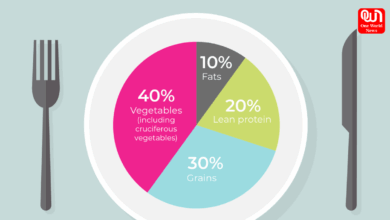Robotic liver transplant: When and who should do it?
Explore the future of liver transplants with robotic precision. Learn who benefits, how it's done, and the swift recovery it offers.
Robotic Liver Transplant: When and Who Should Opt for It?
If you’re unfamiliar with robotic liver transplant surgery, you’re not alone. In this article, we’ll delve into what exactly it is, who can benefit from it, how patients are prepared, and the myriad of benefits associated with this advanced surgical technique.
What is a Robotic Liver Transplant?
A robotic liver transplant differs from conventional liver transplant surgery. Typically, surgeons replace a malfunctioning or injured liver due to liver failure with a healthy one. However, in a robotic liver transplant, automated arms, rather than the surgeon’s hands or laparoscope, conduct the replacement procedure. This approach minimizes invasiveness, enhances surgical precision, and improves overall results.
When and Who Should Opt for a Robotic Liver Transplant?
“These high-precision surgeries, often regarded as a soothsayer for complex hepatic ailments, are most effective on those grappling with disorders including hepatocellular carcinoma (liver cancer), cirrhosis (scarring of the liver), and biliary atresia that may lead to serious liver impairment. Deciding when to undergo a robotic liver transplant can be tricky but is typically suggested for patients who are at stage 3 or higher in chronic diseases or mostly guided by serious or life-threatening damage inflicted upon the patient’s liver functions.”
How is the Patient Prepared for This Type of Transplant?
“Before undergoing a liver transplant, your doctor will review your health history and conduct various tests. If you are deemed healthy enough, a compatibility test may be carried out if the organ is from a live donor to avoid any potential rejection. The doctor will instruct you to abstain from eating at least 6 hours before the operation. On the day of the procedure, the expert team of doctors will explain it in detail and take note of your recent meal intake. Also, the heart rate, blood pressure, and respiration rate will be monitored before being transferred into the operating room.”
We’re now on WhatsApp. Click to join.
How is a Robotic Liver Transplant Carried Out?
“Liver transplants are only considered for individuals suffering from incurable complications such as cirrhosis due to end-stage liver diseases. The healthy liver required for the procedure can be obtained from a deceased (cadaveric or non-living) donor or a living person. Robotic liver transplant surgery involves the use of mechanical arms that create smaller cuts than traditional open or laparoscopic surgeries. This method is employed to remove the liver from the donor (a process known as hepatectomy) and implant it into the recipient (the transplant process). Initially, surgical markings are made on the abdomen of both parties involved, after which minor incisions enable the insertion of instruments by mechanical arms.”
He added, “These incisions also allow for a camera arm’s movement, providing a three-dimensional view of the operation area. With these arms’ help, he/she meticulously detaches the diseased liver from surrounding blood vessels, organs, and structures before securing it. The mechanical arms then extract this damaged organ and replace it with a healthy one, reconnecting them to nearby structures and blood vessels. Once blood circulation is reestablished and any remaining bleeding has ceased, sutures are used to close up incisions before applying sterile dressing at the operation site. Post-operation monitoring takes place over several days to ensure there’s no infection while also evaluating whether or not the body has accepted its new organ.”
Read More: Diabetes management Holistic ways to manage blood sugar with diet and lifestyle
The Benefits of Robotic Liver Transplants
Gone are the days when liver transplant surgeries required large incisions, led to longer hospital stays, and came with significant risks of complications. The advent of robotic liver transplants is revolutionizing this space, offering a plethora of benefits that contribute towards better patient outcomes and improved quality of life post-surgery.
“This technology-driven approach provides surgeons with unparalleled 3D visualization which opens up the avenue for more precise movements. Moreover, less intrusion into the body means fewer chances for infection, reduced pain levels, and lightning-fast recovery times. Patients can get back on their feet sooner than expected and reclaim their livelihoods swiftly and smoothly.”
read more: Benefits Of Doing Just 30 Minutes Of Cycling A Day | Experts Explain!
Follow-up and Recovery After the Transplant
“You will be required to go for regular check-ups and follow-ups as suggested by the hospital. The doctor will explain to you about when to eat solid food. Even after recovering, you will have to follow a well-balanced diet, abstain from alcohol, smoking, or illicit drugs, sleep well, maintain an optimum weight, and take medications prescribed by the doctor only.”
In conclusion, robotic liver transplants represent a groundbreaking advancement in surgical techniques, offering hope and improved outcomes for those facing complex hepatic ailments. Understanding the process, benefits, and post-surgery care is crucial for individuals considering or undergoing this transformative procedure.
Like this post?
Register at One World News to never miss out on videos, celeb interviews, and best reads.








